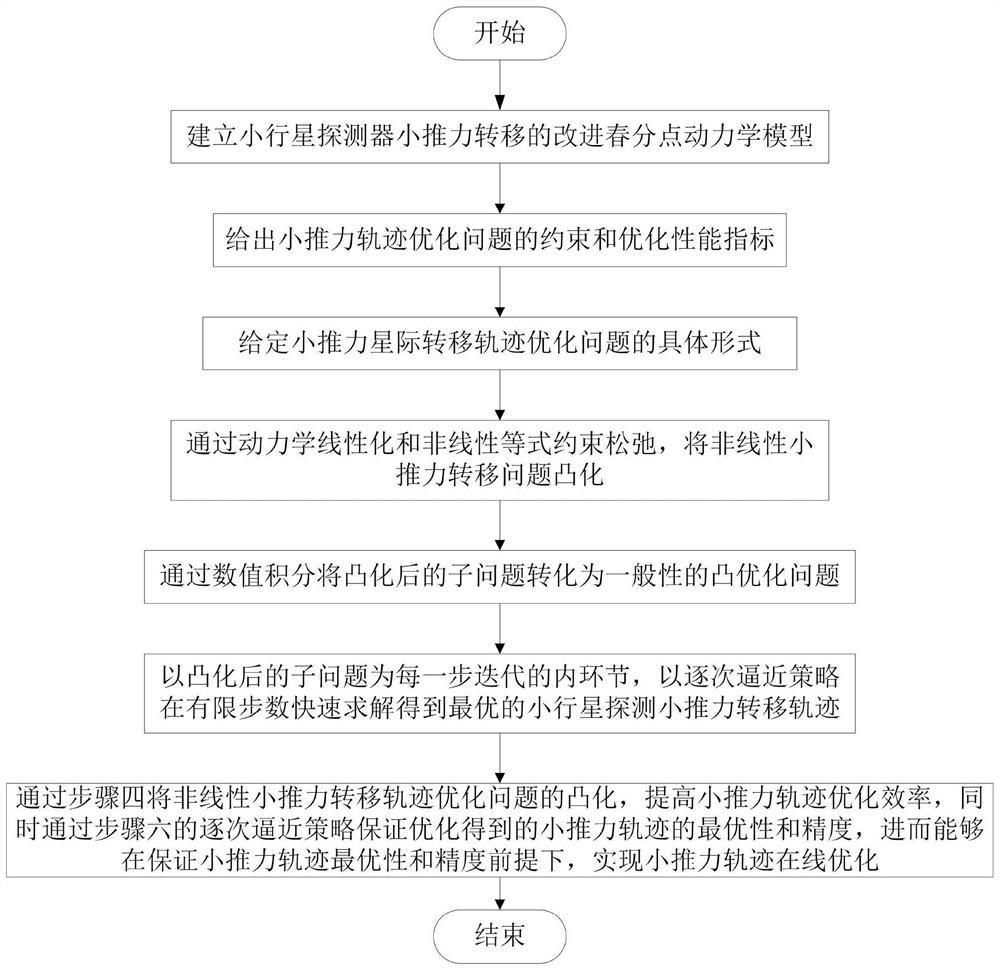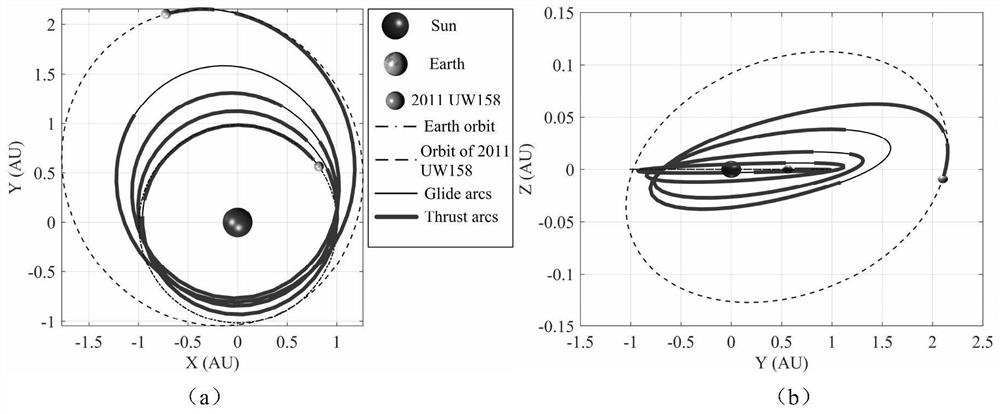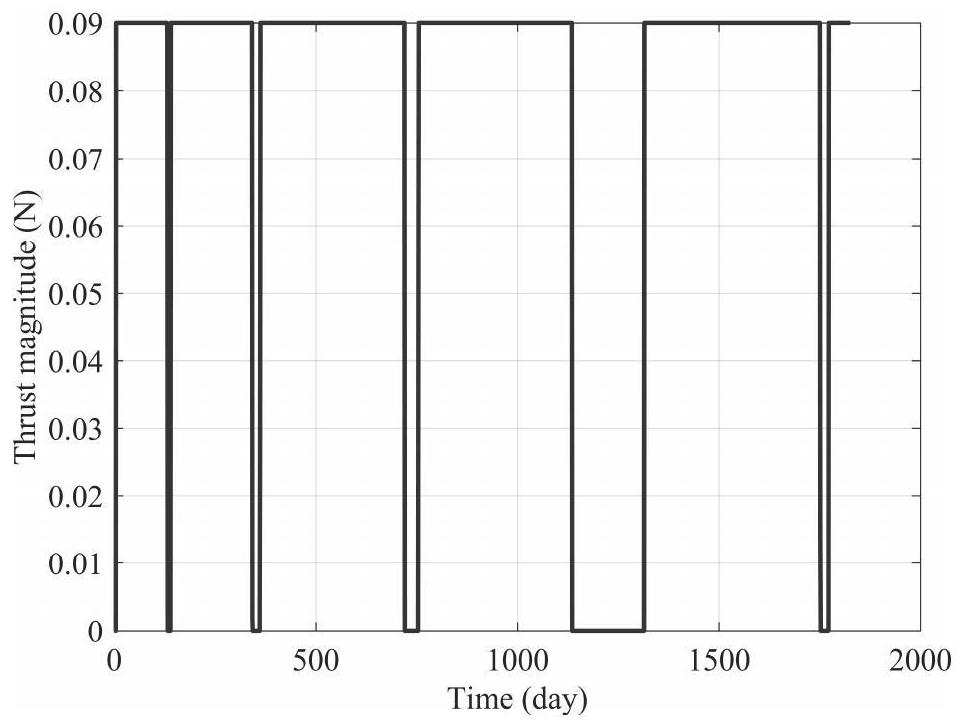Optimization method of small thrust transfer trajectory for asteroid detection based on successive convex programming
A technology for transferring trajectories and optimization methods, applied in the aerospace field, can solve problems such as difficult to give initial values, difficult to determine optimality, etc., to achieve the effect of online optimization, high repeatability and high flexibility
- Summary
- Abstract
- Description
- Claims
- Application Information
AI Technical Summary
Problems solved by technology
Method used
Image
Examples
Embodiment 1
[0074] Such as figure 1 As shown, the method for optimizing the trajectory of a small thrust transfer trajectory for asteroid detection based on successive convex programming disclosed in this embodiment includes the following steps:
[0075] Step 1: Establish an improved equinox dynamics model for the small thrust transfer of the asteroid probe.
[0076] The improved equinox dynamics model for the interstellar transfer process of the asteroid probe is:
[0077]
[0078] Among them, the orbital element x=[p,f,g,h,K,L] of the improved vernal equinox is selected to represent the motion state of the asteroid probe, so only L is a fast variable. In vector x, p=a(1-e 2 ), f=ecos(ω+Ω), g=esin(ω+Ω), h=tan(i / 2) cosΩ, K=tan(i / 2) sinΩ, L=Ω+ω+υ. Where a, e, i, ω, Ω and υ are the semi-major axis of the orbit, eccentricity, orbital inclination, argument of perigee, right ascension of ascending node and true anomaly, respectively. In addition, m is the mass of the detector, T is the ...
PUM
 Login to View More
Login to View More Abstract
Description
Claims
Application Information
 Login to View More
Login to View More - R&D
- Intellectual Property
- Life Sciences
- Materials
- Tech Scout
- Unparalleled Data Quality
- Higher Quality Content
- 60% Fewer Hallucinations
Browse by: Latest US Patents, China's latest patents, Technical Efficacy Thesaurus, Application Domain, Technology Topic, Popular Technical Reports.
© 2025 PatSnap. All rights reserved.Legal|Privacy policy|Modern Slavery Act Transparency Statement|Sitemap|About US| Contact US: help@patsnap.com



